If you're looking to produce top-notch podcasts, investing in a sound mixer can be a game-changer. The perfect mixer for your podcast depends on thing
If you’re looking to produce top-notch podcasts, investing in a sound mixer can be a game-changer. The perfect mixer for your podcast depends on things like what you prefer, what you need, how comfortable you are with audio tech, and the number of people on your podcast. With the right mixer at hand, recording and mixing becomes much easier.
Continue reading this article for great recommendations and tips to help you find the best podcast mixer for your needs.
Why Do You Need A Mixer for Podcast?
A podcast mixer is a crucial tool for those who create podcasts. It lets them blend different sounds into one single track. This is especially helpful during interviews, where separate recordings of the interviewer and the person being interviewed can be made.
Likewise, the interview mixer functions as a preamp, boosting the power of microphones and allowing for the adjustment of volume levels. For improved sound quality, such as equalization and compression, can also be applied to individual tracks.
Adding a podcast mixer to your setup can provide you with various benefits
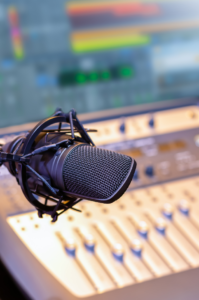 Multiple cohosts in the studio
Multiple cohosts in the studio
A mixer is the most efficient way to combine multiple microphones into a single recording. Connecting the microphones to the mixer allows the required volume levels to be quickly adjusted and the signal sent to the recording software. Thus, it makes mixing multiple microphones more straightforward than trying to cobble together a solution using only USB microphones and additional software.
Mixing sounds audio mixers
Incorporating audio elements such as sound clips, music and voicemails into your recording during the production phase can save you time in post-production. And ensure that everything is captured correctly. Utilizing an audio mixer to play the sounds will ensure they are all properly recorded.
Mix minus
The technique of mix-minus enables live production with a second person via videoconferencing apps such as Zoom or Skype. However, if you connect your recording setup to these apps, your co-host’s voice will create an echo that can disrupt production.
To avoid this, you must send them all the audio, including music and voice, except for their own voice. This requires an interview mixer with an ‘FX send’ or ‘Auxiliary Out’ and a knob to regulate the output.
Live Production
Live production includes incorporating sound effects, music, pre-recorded messages, phone calls, and other necessary elements into a show in real time. This is similar to a radio show, eliminating the need for post-production work.
Start recording, conduct the show, and stop when the episode’s objective is achieved. If desired, some equalization or compression can be done during post-production, but all required sound has already been included. This significantly reduces the amount of editing needed.
Our Top Picks For The Best Audio Mixers
Rode Rodecaster Pro
The Rodecaster Pro is an excellent podcast mixer that boasts remarkable features such as Bluetooth connectivity for phone calls, sound pads for seamless integration of pre-recorded sounds, automatic compression, and many more. It comes equipped with 4 XLR inputs, 4 headphone inputs, faders, a touch screen that offers a plethora of features, 8 sound pads, a microSD card slot, and several other features that make it stand out. |
Yamaha MG10XU
The Yamaha MG10XU audio mixer is a versatile option suitable for both small home recording sessions and portable concerts. With its built-in preamps, it offers exceptional quality options for producing clear and precise highs and bass frequencies. In addition, it features four XLR lines that can also function as 1/4″ jacks. Operating the interface setup is easy, thanks to the 3-band EQ and LED metering, making it a breeze for users to learn and navigate. |
Behringer Xenyx Q802USB
The Behringer Xenyx Q802USB is a top-tier mixer with studio-grade mic preamps and easy USB connectivity. In essence, this device enables you to combine multiple microphones and other sound sources to create a cohesive audio output. It provides diverse advanced mixing capabilities, including frequency equalization, reverb effects, and tracking of the main signal. |
Zoom PodTrack P4
The Zoom PodTrack P4 is an audio interface that is both portable and compact. Additionally, it can function on battery power and has the capability to record onto an SD card or laptop via USB-C. The device is equipped with four XLR inputs, all of which have the option of switchable phantom power for condenser microphones. Furthermore, each microphone receives its own input and headphone output jack |
Yamaha AG06
The Yamaha AG06 is an ideal choice for live mixing and recording, boasting six channels and high-resolution audio (24-bit 192kHz). Additionally, the LOOPBACK feature enables users to route audio anywhere, a capability that is especially useful for webcasting and live recording. Furthermore, the 1-TOUCH EQ/COM, AMP SIM, and EFFECT processing simplifies creating custom sounds. To top it off, the AG06 is compatible with the Apple iPad Camera Connection Kit (AICCK). |
Allen & Heath ZED-12FX
The Allen & Heath ZED-12FX stands out as one of the current sturdiest podcasting mixers. Furthermore, its sound quality is exceptionally clear and polished. This mixer is highly versatile and can be utilized in various ways. It boasts four mono microphone/line channels, all equipped with phantom power, three stereo inputs and onboard FX. In addition to its longevity, this sound mixer is an excellent choice for podcasters seeking exceptional sound quality. |
Soundcraft Signature 12MTK Multi-Track Mixer
The Soundcraft Signature 12MTK is a multi-track mixer allowing individual track recording. With eight 3-pin XLR inputs, equipped with Soundcraft Ghost mic preamps, this mixer offers superior sound quality. Additionally, it boasts a 14-in/12-out ultra-low latency USB playback and recording interface. The mic preamps deliver ultra-low noise performance, ensuring minimal interference. Moreover, the mixer has different on-board effects and premium-quality faders, enhancing its versatility. |
Presonus StudioLive AR8c
The Presonus StudioLive AR8c is an excellent option if you have a more expansive budget. It boasts four XLR inputs, allowing for a wide range of microphone use. Plus four additional inputs: quarter-inch line-level plugs, a stereo RCA plug, and Bluetooth connectivity. Additionally, each channel features a 3-band EQ and auxiliary sends, which can route sound to an external speaker or effects unit. Furthermore, the AR8c contains 16 onboard effects, including multiple types of reverb and delay. |
Behringer Xenyx Q502USB
The Behringer Xenyx Q502USB is a top-tier audio mixer for novice podcasters embarking on their broadcasting journey. This economically-friendly device also grants entry to user-friendly recording and editing software. Despite its modest design, this lightweight mixer is a potent contender. As it only boasts a limited number of inputs, it is best suited for single-person podcasting. It should be noted that this sound mixer only supports 15V phantom power, not the 48V that most microphones require. |
Mackie PROFX8V2
The Mackie ProFX8v2 is a top-notch mixer suitable for recording and live performances. With four XLR inputs, each equipped with 3-band EQ, Aux/FX, Panning, and compression control, this mixer offers exceptional versatility. Additionally, you can activate a push-button 100Hz low-cut filter on each channel. The audio mixer also boasts 60mm faders on every channel, allowing for effortless level adjustments. Moreover, the first channel can easily switch between line-level and Hi-Z modes. |
Tips For Choosing The Best Audio Mixers For Podcasting
When selecting a mixer for audio recording, it is essential to prioritize your needs and minimize attention to unnecessary add-ons. To assist you in choosing the optimal mixer for your podcast, consider the following tips:
Advanced vs Basic
Budget to mid-range mixers offer everything the average podcaster requires. And this includes multiple XLR inputs and dials to adjust EQ, gain, and volume controls. On the other hand, more advanced mixers come with additional features like built-in compression and sound effects, which may be optional for podcasting purposes.
Apart from the features, the controls are another factor distinguishing entry-level and advanced mixers. Entry-level mixers typically have knobs to control audio, while advanced consoles have sliders and faders. Although knobs are suitable for adjusting volume or EQ, sliders provide more precise control and are easier to fine-tune recordings.
Number Of Input Channels
To control the volume and sound of any sound source, such as an electric instrument or a microphone, input is required for connection. On the other hand, a channel refers to a set of controls that specifically affect a certain input.
It is recommended to invest in a multi-channel mixer, even if you are only planning to record solo sessions, to ensure future compatibility with larger recording sessions involving multiple participants. Starting with a 2-channel mixer, you can gradually scale up to 16 channels for mixing full bands and live sound.
Microphone Inputs & Preamps
When choosing a sound mixer for your podcast, it’s important to think about how many people will be talking. You need enough microphone slots for all your hosts and guests. Some mixers have only two slots, while others can accommodate four, six or even eight microphones.
Also, you’ll want to check out the quality of the preamp on the mixer – that’s what gives power to your microphones. A poor-quality preamp might not give enough juice to dynamic mics, which could result in lackluster sound. If this is an issue, you may need something called an inline preamp to get better audio results.
Phantom Power
Phantom power is the 48-volt DC required by the condenser and ribbon microphones for operation. This power can solely be transmitted through XLR cables. Therefore, it is imperative to ensure that your audio mixer has at least one XLR input channel that can provide 48-volt phantom power.
Special Effects
Audio mixers can alter the sound of an instrument with minimal effort, merely by adjusting a few knobs. Some of the most prevalent special effects include the following.
By adjusting the sliders or knobs on a mixer, equalization can be manipulated, allowing one to customize the sound of a source. This entails altering the volume of frequencies, typically separated into low, medium, and high. Consequently, equalization enables a greater degree of control over the sound.
It allows users to create a literal echoing effect, making it sound as if the sound is reverberating in a larger space. This is typically controlled by a single knob.
Unlike the loud quality of echoes, reverb adds a subtle depth to vocals or musical instruments. This effect is achieved without sounding too harsh like in a big cave or hall, making the audio experience more enjoyable and detailed. |
Connectivity
A good quality audio mixer for podcasting should have different ways to connect. It could use things like XLR ports, USB plugs, Bluetooth or even an SD card slot. This way, you get more choices when it comes to recording and playing back your podcasts.
Comfort & Ease Of Use
People don’t want to face any difficulties or discomfort while doing what they love. So, a top-notch audio mixer should be easy to use. It should have a user-friendly interface that lets you quickly and smoothly adjust levels and settings.
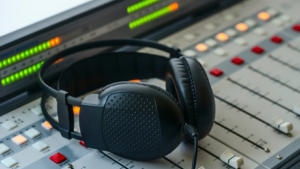
Choose the Best Audio Mixers That’s Right For Your Podcasting Needs
After checking out our list of audio mixers perfect for podcasting, the final decision on what equipment to use is completely up to you. But remember, it’s really important to think about the features and abilities of each mixer before making your choice. This will help guarantee that your podcast sounds great and that your listeners enjoy tuning in.
So, don’t hesitate to invest in quality equipment and take your podcast to the next level!

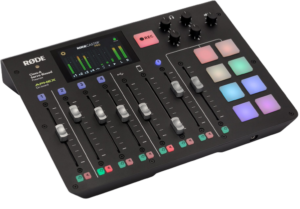
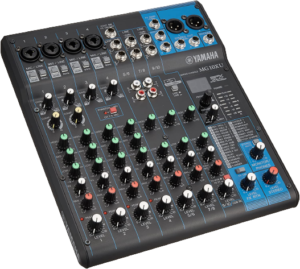

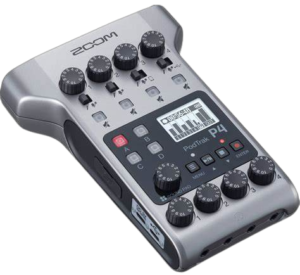
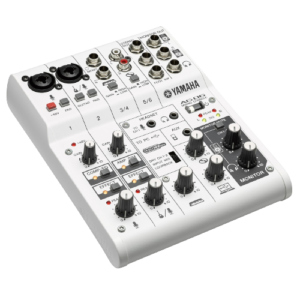
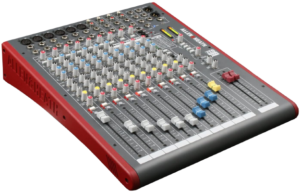
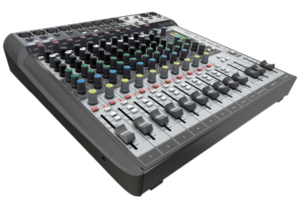
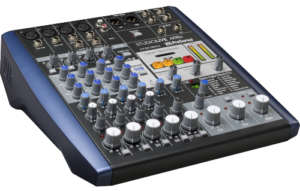
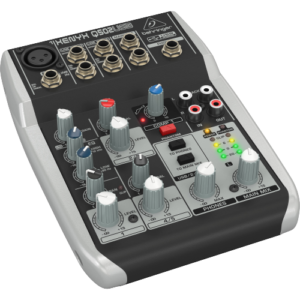
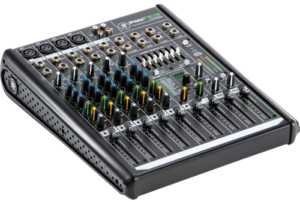

COMMENTS